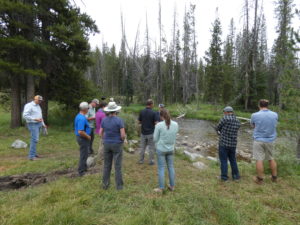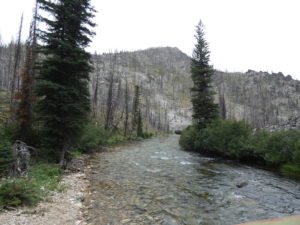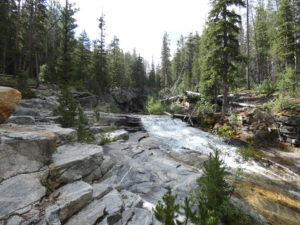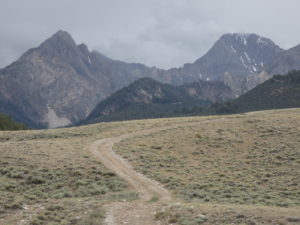Idaho is home to some of the most incredible rivers in the country, from the thundering rapids of the Middle Fork of the Salmon, one of the original eight wild and scenic rivers in the nation, to the desert glory of the Bruneau River in the Owyhee Wilderness, which was designated as wild and scenic in 2009. Idaho contains a whopping 107,651 miles of rivers, of which only 891 miles are formally protected as wild and scenic (or less than 1% of the state’s total river miles).
How do we decide whether the remaining 106,760 river miles in Idaho are worthy of wild and scenic river protection? The answer is through collaboration for the Salmon-Challis National Forest. We used a similar approach nearly a decade ago, when ICL’s participation in the Owyhee Initiative in agreement with local ranchers and conservationists helped protect 316 miles of river as wild and scenic.
River Protection on the Salmon-Challis NF
The U.S. Forest Service is currently revising its plan for the Salmon-Challis. The agency is required to review all rivers, creeks and streams of sufficient size to see if they are eligible and suitable for wild and scenic river protection. When the final forest plan is signed, it will include a recommendation to Congress regarding which rivers should receive wild and scenic designation. ICL plays a leading role in the Central Idaho Public Land Collaborative’s wild and scenic river taskforce, which has been working since last fall to develop a consensus-driven wild and scenic river recommendation on the Salmon-Challis.
Summer Field Tours
 This past week, the collaborative put on two days of field tours to review river segments of particular interest to the group. We had a broad representation of stakeholders, including local ranchers, Forest Service employees, Congressional staff, sportsmen groups, the Idaho Farm Bureau and other conservation organizations.
This past week, the collaborative put on two days of field tours to review river segments of particular interest to the group. We had a broad representation of stakeholders, including local ranchers, Forest Service employees, Congressional staff, sportsmen groups, the Idaho Farm Bureau and other conservation organizations.

We visited the upper headwaters of the Wild and Scenic Middle Fork of the Salmon River. The Middle Fork is the gold-standard, but its upper headwater streams (such as Marsh Creek) are not afforded the same protections despite being integral to the entire river system. It is this recognition of the importance of the whole system that attracted us to these headwater streams. Although each of these streams are relatively minor in terms of size and volume, together they are the source of the clean, cold water of the Middle Fork downstream and they provide key spawning habitat for a genetically pure Chinook salmon population.
 The next day, we explored several beautiful river segments in the Pioneer Mountains near Ketchum, including the upper reaches of Wildhorse Creek. The conversation here centered on how the recreational and scenic values of that mountain stream could benefit from management as a wild and scenic river while still balancing the concerns of ranchers who have grazing allotments in that area.
The next day, we explored several beautiful river segments in the Pioneer Mountains near Ketchum, including the upper reaches of Wildhorse Creek. The conversation here centered on how the recreational and scenic values of that mountain stream could benefit from management as a wild and scenic river while still balancing the concerns of ranchers who have grazing allotments in that area.
 We also visited the spectacular upper Pahsimeroi River drainage, which is ringed by several of Idaho’s tallest peaks in the Lost River Range. We had a great opportunity to hear from local ranchers there and had a thought-provoking discussion about the pros and cons of a wild and scenic designation in that area.
We also visited the spectacular upper Pahsimeroi River drainage, which is ringed by several of Idaho’s tallest peaks in the Lost River Range. We had a great opportunity to hear from local ranchers there and had a thought-provoking discussion about the pros and cons of a wild and scenic designation in that area.
What’s Next?
The collaborative’s wild and scenic group will provide the Forest Service with our consensus recommendation sometime this fall, timed to coincide with the agency’s own wild and scenic river review. We will not only provide a list of rivers to recommend, we will also share our rationale as to why we are (or are not) recommending certain river segments. There will be a chance for you to weigh in this fall during a Forest Service public comment period – stay tuned to ICL’s website and email communications for more information.
In the meantime, go check out one of these amazing rivers for yourself this summer!

